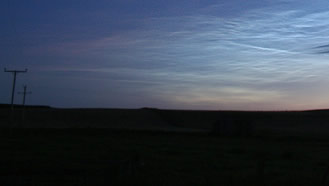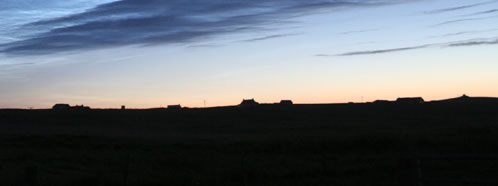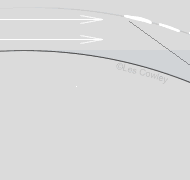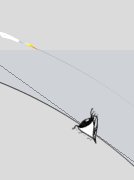|
 |
Night
shining clouds imaged 1:30am July 2007 by Anne Hourston
in the Scottish Orkney Islands. They are Earth's highest
clouds, 50 miles high and
close to the immensely cold mesopause. They are in summer
sunlight while the dark tropospheric clouds a mere 1-3 miles
high are in night. ©Ann
Hourston, shown with permission. |
|
 |
The short summer nights of latitudes of 50
- 65° reveal the highest clouds - noctilucent
or ‘night shining’ clouds, NLCs.
They are colourless
or bluish-white. They can be skein-like, rich with undulations,
currugations, knots and streaks clawing upwards into the sky, at
other times they lie close to the horizon as a featureless band.
The clouds are seasonal. Look for
them from mid May to mid August (mid-November to mid-february in
the Southern Hemisphere). They are never visible in daylight.
Wait until an hour after sunset when twilight has deepened.
The sun should be 6 - 16° below
the horizon, enough to darken the sky but not so low that the NLCs
are not still in sunlight. Search first of all low in the sky towards
the direction of the sun beneath the horizon, northwest before midnight,
northeast afterwards. Avoid moonlit nights when lower clouds and
especially cirrus are lit white against a darker sky.
Binoculars help in distinguishing them from lower cirrus clouds because
under magnification they appear sharper.
NLCs are seen
further south. They have been sighted
in Europe as far south as Austria, Hungary, Italy and
southern Germany. In the US they have been seen in
Utah and Colorado.
|
|
|





